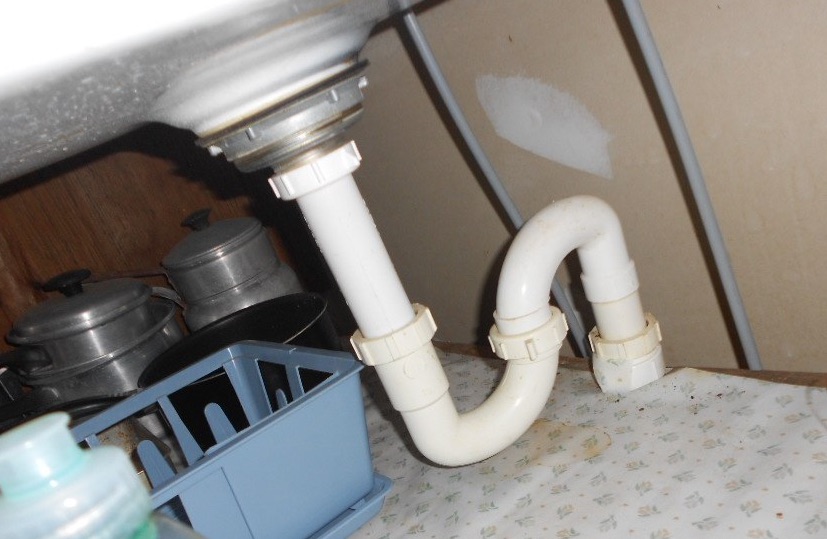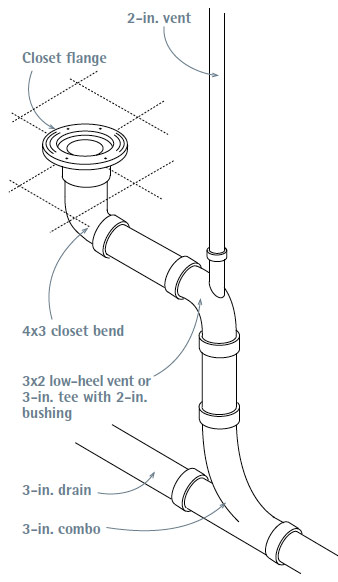What're your ideas on What Are Plumbing Vents and Why Are They Important??

Appropriate ventilation in plumbing systems is often overlooked, yet it is critical for keeping the performance and safety and security of your home's pipes. Ventilation helps manage air pressure, prevent the accumulation of harmful gases, and make certain the effective removal of waste. In this overview, we will discover the significance of correct plumbing air flow, how it functions, and the benefits it gives your plumbing system.
Recognizing Ventilation in Pipes
Ventilation in plumbing describes the network of pipelines that allow air to stream via the drainage system. These vents serve numerous purposes, consisting of managing air pressure within the pipes, protecting against sewer gases from entering the home, and helping in the smooth circulation of wastewater.
How Ventilation Works in Plumbing Solutions
Atmospheric Pressure Law
Proper ventilation preserves balanced atmospheric pressure within the pipes system. When water streams with pipes, it displaces air. Without sufficient ventilation, this displacement can create negative pressure, resulting in slow down drains pipes or siphoning of water from catches, which can cause unpleasant odors to seep right into the home.
Protecting Against Sewage System Gas Build-up
One of the most crucial functions of plumbing vents is to stop sewage system gases, such as methane and hydrogen sulfide, from building up within the home. These gases can pose significant health and wellness dangers and are very flammable. Vent pipelines allow these gases to run away safely outdoors.
Helping in Waste Elimination
Air flow assists in the reliable removal of wastewater by stopping airlocks in the drainage system. When air can stream openly with the vents, it permits water and waste to flow efficiently via the pipes, minimizing the risk of obstructions and backups.
Types of Pipes Vents
Main Heap Vent
The major stack vent, likewise called the air vent stack, is the primary vent in a plumbing system. It prolongs from the major drainpipe align through the roof covering, allowing gases to get away and fresh air to get in the system.
Branch Vent
Branch vents connect to the main stack vent and offer specific components, such as sinks, commodes, and showers. These vents guarantee that each fixture has sufficient ventilation to function correctly.
Air Admittance Valve (AAV).
An Air Admittance Valve (AAV) is a one-way shutoff that permits air to go into the plumbing system without the need for a typical air vent pipeline prolonging through the roof. AAVs are generally utilized in remodellings or locations where mounting a standard air vent is impractical.
Indicators of Poor Ventilation in Pipes.
Slow Draining Fixtures.
If your sinks, tubs, or bathrooms are draining pipes slowly, maybe an indication of inadequate ventilation. Insufficient air flow can develop a vacuum impact, making it hard for water to drain pipes properly.
Gurgling Seems.
Gurgling audios coming from drains pipes are often a result of air being drawn through water traps because of adverse stress in the pipelines. This is a clear indicator of insufficient ventilation.
Undesirable Smells.
Sewage system smells inside your home are a warning that your pipes system is not properly ventilated. This could imply that drain gases are not being effectively aired vent outside, bring about possibly unsafe problems.
Typical Ventilation Mistakes.
Inadequate Vent Sizing.
Using small air vent pipelines can result in poor air circulation and stress discrepancies in the system. It's necessary to use vents that fulfill the certain demands of your plumbing system.
Improper Vent Positioning.
Putting vents also much from the fixtures they serve can minimize their effectiveness. Correct placement ensures that air can move openly and effectively through the system.
Ignoring Code Requirements.
Building codes provide details guidelines for plumbing air flow. Neglecting these codes can lead to a system that fails to operate appropriately and may lead to expensive repair work or carcinogen.
Benefits of Proper Ventilation.
Improved System Performance.
Effectively ventilated plumbing systems operate much more effectively, with less obstructions, faster draining pipes, and much less pressure on the pipelines. This performance expands the lifespan of the plumbing system.
Improved Air Quality.
By avoiding sewer gases from entering your home, proper ventilation adds to far better indoor air high quality, making your living environment healthier and more comfy.
Stopping Water Damage.
Adequate air flow assists avoid water from being siphoned out of catches, which can result in sewer gases getting in the home and triggering water damages gradually.
Steps to Ensure Proper Ventilation.
Consulting Plumbing Codes.
Constantly speak with local pipes codes when designing or changing your plumbing system. These codes offer the needed standards for proper airing vent and guarantee your system satisfies security standards.
Normal Assessment and Upkeep.
Regular evaluations can assist identify prospective ventilation problems before they become major issues. Upkeep tasks, such as cleansing vent pipes and looking for clogs, are important for maintaining the system in good working order.
Professional Installation.
For new installations or major modifications, it's a good idea to hire a specialist plumber. They have the experience to ensure the ventilation system is correctly created and installed according to code.
Verdict.
Appropriate air flow is a vital element of any type of plumbing system, guaranteeing that it functions efficiently and securely. By understanding the significance of ventilation, identifying the indications of inadequate ventilation, and taking steps to keep your system, you can protect against costly concerns and safeguard your home's air top quality.
4 Things You Should Know About Your Plumbing Vents
What Plumbing Vents Are
Also called a vent stack, a plumbing vent is a vertical pipe attached to your drain line that runs through your roof. The plumbing vent pipe, or plumbing air vent, removes gas and odors from your plumbing system and allows fresh air to enter the pipes, helping the water to flow out of the drain pipes.
What Plumbing Vents Do
Plumbing vents have two basic functions. One of which is to allow unpleasant smelling wastewater and sewer gasses to escape your plumbing system instead of entering your home. Plumbing vent pipes are typically located on roofs, away from windows, to ensure the fumes exit the home completely.
The other function of the plumbing vent is to move fresh air into your plumbing system. This helps move water through every plumbing fixture in your house, like toilets and sink drains. Think of the way in which you need to let a little air into the bottle as you pour soda in order to make the drink flow smoothly.
Different Types of Plumbing Vents
- True vent: This is the most common vent option. In simplest terms, a true vent is a vertical pipe attached to your drain line that exits through the roof. They often function as the main vent that other fixtures can connect to.
- Re-vent pipe or auxiliary vent: Attached to the drain line near specific plumbing fixtures, re-vent pipes run up and over to connect to the main vent.
- Common vent: Two plumbing fixtures installed on opposite sides of a wall are typically tied into the vent stack using something known as a sanitary cross.
- Wet vent: This venting option operates as a drain pipe and a vent at the same time. Wet vent drainage systems drain water from one fixture while venting the air from another. Although they’ve been used for over 100 years, wet vent systems have only recently been added to the plumbing code in many areas. If you’re planning on installing one in a bathroom remodel, make sure you check your local code prior to construction.
- Loop vent: For free-standing fixtures like kitchen island sinks, loop vents are ideal. These vent pipes run under the floor, rise from the P-trap, and create a loop inside the cabinet sink.
- Air admittance valve: An AAV is a one-way mechanical valve typically installed at the site of the plumbing fixture. AAVs allow venting to occur without having to tie into a larger venting system. They’re ideal for venting fixtures where you aren’t able to easily connect to an existing vent system.
Common Plumbing Vent Issues
Although vent pipes typically don’t have water flowing through them, they’re still subject to many typical plumbing issues. For example, clogs are one of the most common problems associated with sewer vent pipes. If your vent pipe gets clogged, all of your plumbing fixtures tied into the vent stack will be affected.
A sink with a slow drain that bubbles and gurgles or a strong sewage smell around your toilet are both indicators that your toilet vent pipe is clogged. Because most vent pipes exit through the roof, old leaves, twigs or even a bird’s nest could be clogging the pipe.
Clogs in your vent pipe system cause a buildup of negative pressure, meaning that water won’t be able to flow out of your home very well. It’s similar to putting your finger over the opening of a straw to trap water inside. When you remove your finger, the water is able to flow out of the straw.
If you suspect you have any blockage in your vent, make sure you have a professional come examine the situation. Left unchecked, a blocked air vent can lead to other costly repairs, like leaks and sediment buildup.
Under Pressure
Pipe vents are essential aspects of a home’s plumbing system. Owning a home means learning about all sorts of things you never put much thought into before. But by understanding as much as you can about the important systems of your home, you can keep those budgets intact and those anxiety levels low.
https://www.homeserve.com/en-us/blog/home-improvement/plumbing-vents/

Do you enjoy reading about What Is a Plumbing Vent and Why Is It Important? Give a remark below. We will be glad to listen to your feelings about this page. In hopes that you visit us again later on. Sharing is good. Helping others is fun. I enjoy your readership.
Book Inspection
Comments on “Essential Advantages for Correct Ventilation in Plumbing Systems”